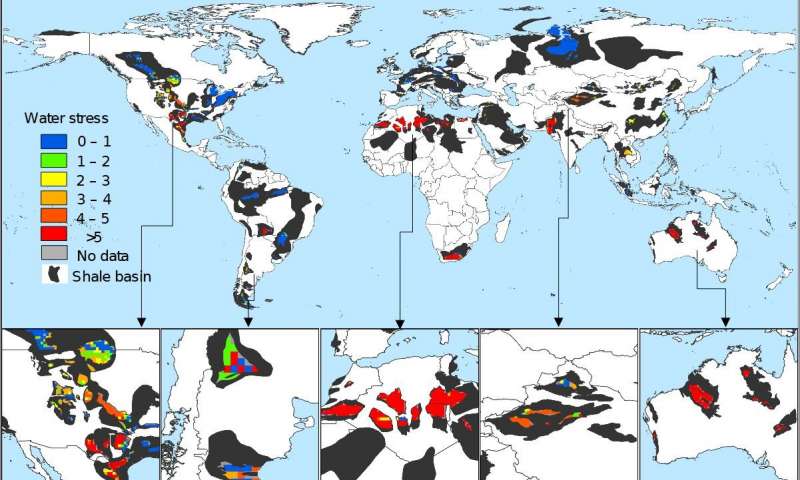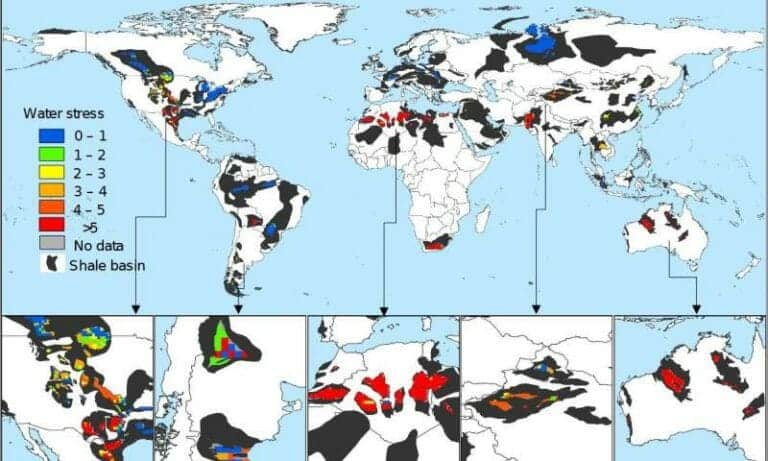Credit: Rosa, et al. (2018)
Using hydraulic fracturing to extract oil and natural gas from shale is a common technique used worldwide. Because the technique requires large amounts of water, however, it raises the question of whether it could lead to water shortages or competition with other water uses, especially agriculture.
In a new paper in the AGU journal Earth’s Future, Lorenzo Rosa and his colleagues evaluated the impacts of hydraulic fracturing on local availability for food production and other human and environmental needs globally. They found that 30 percent of shale deposits are located in arid regions where aquifers are already being heavily tapped for irrigating crops and 31 percent to 40 percent of shale deposits are in areas where water-stress would emerge or be exacerbated by fracking.
The researchers conclude that in such places water management plans would be needed to ensure that fracking would not affect other human and environmental water needs. The map below shows water stress within shale deposits. In water stressed areas, water is consumed at greater rates than the local water supply is replenished. Green, yellow, orange or red pixels represent areas where there are shale deposits and where freshwater is […]
Full article: New study examines impacts of fracking on water supplies worldwide
More about water and fracking:
Trump plan to allow new fracking on California coast, Central Valley moves forward
Intensification of the water footprint of hydraulic fracturing
Did a huge Gillette water project frack-up rural wells?
Final EPA Study Confirms Fracking Contaminates Drinking Water
5 Million Gallons of Freshwater Used to Frack Just One Well
New Mexico official: Texans are ‘stealing’ water and selling it back for fracking
Lawsuit Launched Against Trump EPA for Approving Fracking Waste Dumping Into Gulf of Mexico
Penn State study: Spraying brine from drilling, fracking on roadways is hazardous



